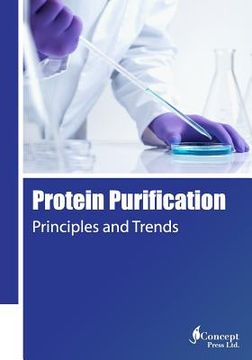Synopsis "Protein Purification: Principles and Trends (in English)"
Chapter 1 uses SILAC and TMT quantitative MS methods to identify novel target proteins modulated in the erlotinib (EGFR TKI) resistant lung cancer cells. The use of multiplex quantitative proteomic strategies, such as SILAC and TMT protein labeling are powerful methods for identifying a large number of novel biomarkers. Chapter 2 describes a MALDI-TOF/TOF based proteomic approach to profile HAPE-related proteomic changes in plasma. 25 differential plasma proteins responsible for the discrimination between the two groups from HAPE subjects and healthy controls have been identified and studied based on their biological functions. Furthermore, two of the 25 proteins (Haptoglobin and Apoliprotein A- I) have been considered as putative biomarkers for HAPE. Chapter 3 discusses an important oxidative stress-mediated tyrosine nitration in a protein in tumorigenesis, and addresses the principles of nitroproteomics, isolation and purification of nitroproteins, mass spectrometry characteristics of nitropeptides, methodology used for nitroproteomics in pituitary adenomas, current status of human pituitary nitroproteomics studies, and future trends. Chapter 4 introduces the fabrication process of boron nitride nanopores and demonstrates the conductance change in ionic current due to the translocation of both dsDNA and ssDNA through the nanopore. It open a window for DNA sensing with boron nitride nanopores and a potential platform for future DNA sequencing application. Chapter 5 shows the purification of fission yeast Dmc1 and its accessory proteins, and describes a conventional method to monitor DNA strand exchange reaction, which is a powerful tool to understand the biological significance of Dmc1 as well as its accessory proteins. Chapter 6 aims to detail with necessary basic methods in protein purification and analysis that leads us to grasp new roles assigned to the $\alpha$1--$\beta$2 (and $\alpha$2--$\beta$1) interface of the human hemoglobin molecule: one is for stabilizing the HbO2 tetramer against acidic autoxidation, and the other is for controlling the fate (removal) of its own erythrocyte from the blood circulation. Chapter 7 summarizes mouse and human studies that provide mechanisms by which cholesterol could affect inflammation. Apart from the direct effects, its intracellular localization as well as the contribution of different types of cholesterol to the inflammatory response is highlighted -- when oxidized, cholesterol is more likely to instigate inflammation. Chapter 8 summarizes major cell sources, important proteins, transcription factors and signaling cascades, which governs mesenchymal stromal cell (MSC) fate towards the osteogenic lineage as well as new trends in the development of scaffold materials with osteoconductive and osteoinductive properties. Chapter 9 describes features, purification methods and applications of proteins such as membrane bound proteins, enzymes or recombinant proteins produced by halophilic bacteria. Chapter 10 discusses various tau modifications associated with tau aggregation. Tau aggregation is a pathological hallmark of many neurodegenerative diseases including AD. Chapter 11 discusses the properties of the Clostridium difficile toxins, the mechanism of action, and the immunopathogenesis of the toxins. Clostridium difficile toxins will trigger Clostridium difficile infection (CDI) which is the leading cause of hospital-acquired and antibiotic-associated bacterial diarrhea in the United States. Chapter 12 discusses the design of bioseparation strategy for engineering purification of conjugated proteins. The strategy is built on physicochemical properties which include molecular size, surface charge distribution and relative hydrophobicity for size exclusion, ion exchange and hydrophobic interaction chromatography respectively.

